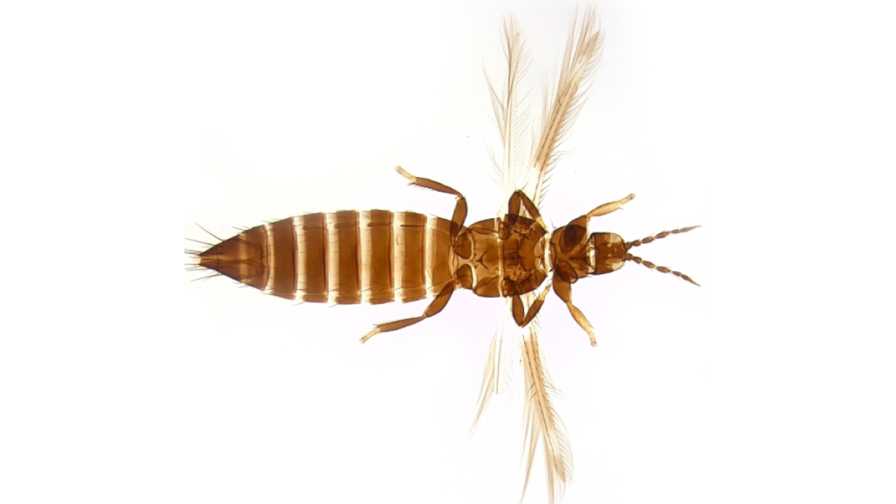Avoid Getting Tripped up by Asian Bean Thrips

Asian bean thrips, Megalurothrips usitatus (Bagnall), also known as Oriental bean flower thrips or bean flower thrips, is native to Asian tropics and ranges from Pakistan to Fiji and from Japan to Australia. This pest is an important pest of beans in Taiwan and China. In Taiwan, the damage produced by M. usitatus in combination with other thrips species can reduce yield by 30%. Photo by Stan Diffie
In March 2020, the Florida Department of Agriculture and Consumer Services Division of Plant Industry (DPI) received a sample of thrips collected on snap beans in Miami-Dade County for identification. These were first identified as Megalurothrips usitatus (Bagnall) and later confirmed by DPI taxonomists based on two males and a female examined under compound microscope and DNA bar code sequences from four individuals. This is the first record for M. usitatus in the continental U.S.
The preferred host of Asian bean thrips is snap beans, but reported hosts include other legumes, including peanuts, soybean, pigeon pea, cowpea, lima bean, and even potatoes. Substantial damage can occur by direct feeding of larvae and adults on flowers, leaves, and pods, and by oviposition on flowers and pods. Infestations begin in the flowers, and pods become twisted and deformed with reddish-brown russet marks as the thrips feed. Large infestations cause poor pod set, stunted plants, and wilted leaves and flowers. This species does not transmit tospoviruses.
Identification
Females and males differ in size and color. Females are nearly 2 mm long, black with white or yellowish intersegmental bands. Their antennae are black, except for third segment, and their wings are banded black and white with a wide, light band at the base and another wide, light band near the wing tip. The setae between posterior ocelli are long and easily seen under a dissecting microscope. Males are smaller, around 1 mm long, slender, and yellowish in color. Their wings and head setae are similar to the female, but contrast of the wing-banding pattern is less sharp. Young larvae are yellow but gradually turn red as they mature.
Survival and Spread
Length of life cycle is host and ambient temperature dependent. In China, M. usitatus completes the life cycle in nine to 10 days. Eggs are inserted into flowers, pods, and leaves. Larvae hatch to feed on leaves and flowers. Larvae go through two molts, mature, then drop to pupate in the soil. Pupae prefer moist, sandy soils. Pupal stages last two to three days. Newly hatched adults climb plants again to feed on pollen, mate, and oviposit. Larvae are randomly distributed on leaves and flowers, but adults aggregate following pheromones released by males. Reproduction may be asexual by parthenogenesis or sexual.
Management Methods
A number of beneficial insects feed on thrips, but their impact is not well known. Growers should avoid planting next to infested crops and practice crop rotation.
Rapid crop destruction after harvest will prevent thrips from spreading to new plantings.
Pesticides used to manage other thrips species should be effective. Broad-spectrum pesticides should be avoided due to impact on beneficial insects. Note that many thrips species are known to develop resistance to pesticides easily.










